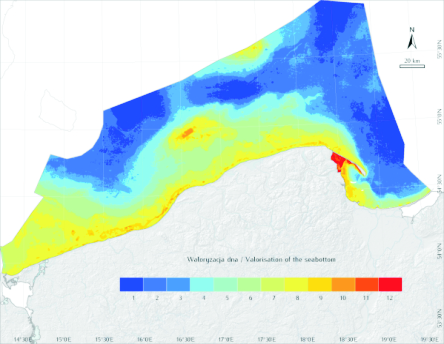Biological Valuation
Biological valuation method
The marine biological valuation methodology is able to integrate all available biological information on an area into one indicator of intrinsic value of marine biodiversity, without reference to anthropogenic use. This methodology can be used in every marine environment, independent of the amount and quality of the available biological data or the habitat type.
For environments for which data are available, subzones within a study area are scored against two biological valuation criteria: rarity and aggregation or fitness consequences.[1]
Biological valuation maps
Biological value is not a direct measure of ecosystem health. Often, areas regarded as of high biological value are considered to be valuable providers of socio-economic goods and services and are of high quality in terms of environmental health. The main difference is, however, that biological valuation focuses on the features of species and communities themselves, and not on the contamination or the extractable/usable part of the ecosystem.
Therefore marine biological valuation provides a comprehensive concept for assessing the intrinsic value of the subzones within a study area. It is a tool for calling attention to subzones that have particularly high ecological or biological significance. The biological valuation maps can also be used as baseline maps for future spacial planning in the marine environment. [1]
References
- ↑ 1.0 1.1 Heip, C., Hummel, H., van Avesaath, P., Appeltans, W., Arvanitidis, C., Aspden, R., Austen, M., Boero, F., Bouma, TJ., Boxshall, G., Buchholz, F., Crowe, T., Delaney, A., Deprez, T., Emblow, C., Feral, JP., Gasol, JM., Gooday, A., Harder, J., Ianora, A., Kraberg, A., Mackenzie, B., Ojaveer, H., Paterson, D., Rumohr, H., Schiedek, D., Sokolowski, A., Somerfield, P., Sousa Pinto, I., Vincx, M., Węsławski, JM., Nash, R. (2009). Marine Biodiversity and Ecosystem Functioning. Printbase, Dublin, Ireland ISSN 2009-2539
